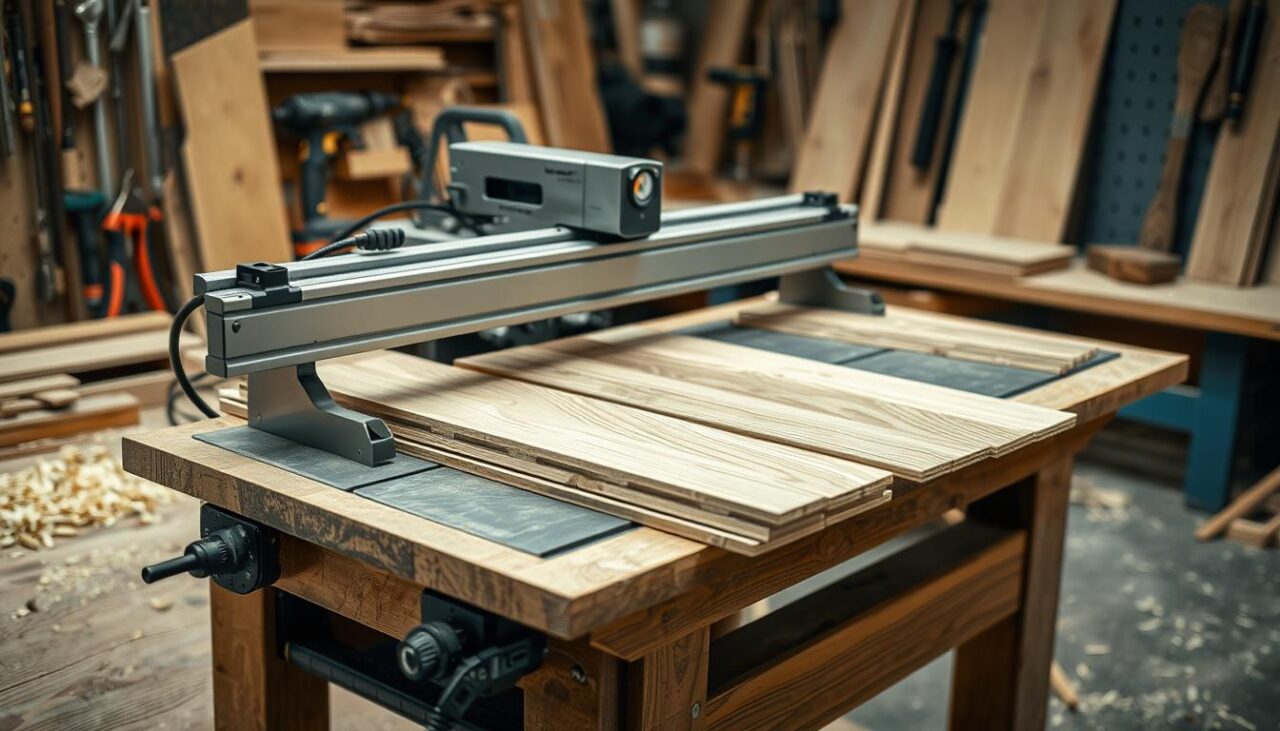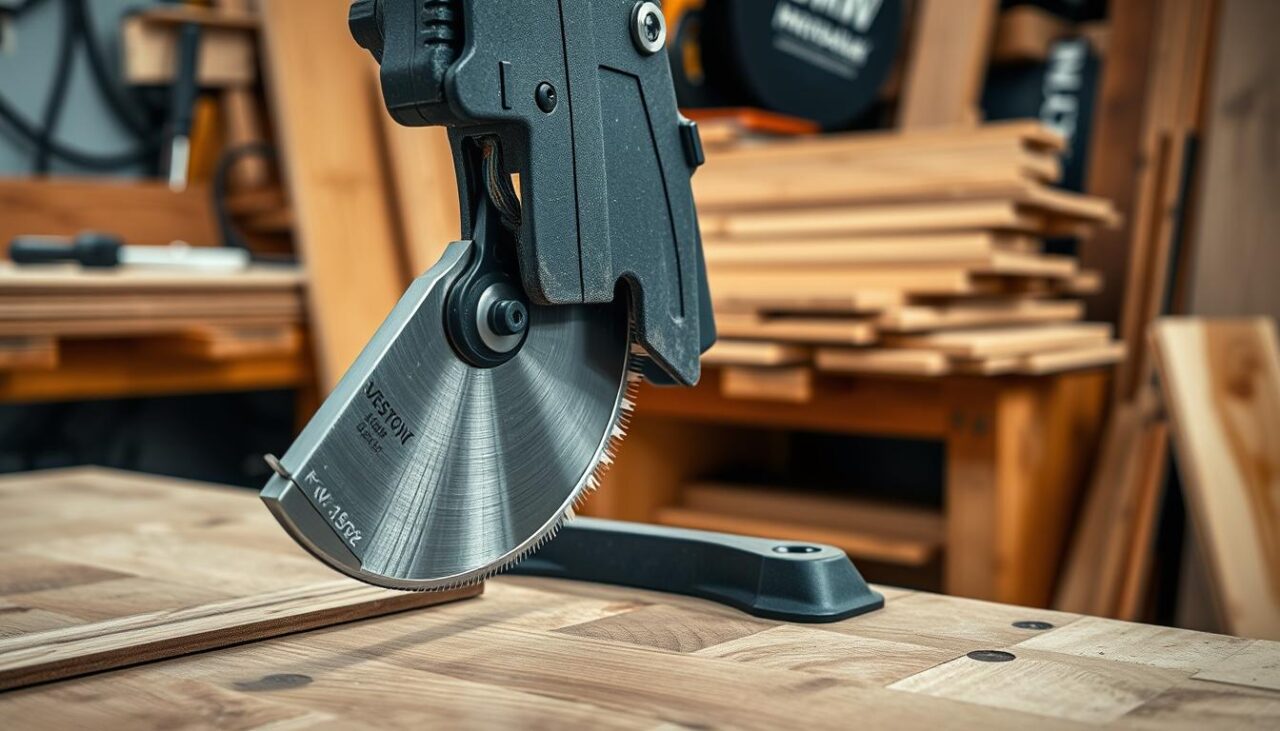When you start a flooring project, like tile, laminate, or hardwood, the right saw is key. It helps you get professional-quality results. In this article, we’ll help you pick the perfect flooring saw for your project. We’ll look at the different types of saws, what features to look for, and give tips to help you choose wisely.
Key Takeaways
- Understand the different types of flooring saws, including tile saws and laminate saws, to choose the right tool for your project.
- Identify the key features to consider, such as power, blade size, and cutting capacity, to ensure the saw meets your specific needs.
- Learn how to evaluate the various options on the market to make an informed decision that will deliver high-quality, efficient results.
- Discover tips and best practices for using your flooring saw safely and effectively throughout the project.
- Explore the benefits of investing in a quality flooring saw to elevate the overall quality and success of your flooring installation or renovation.
Understanding the Different Types of Flooring Saws
Choosing the right saw for your flooring project depends on the material. Tile saws are perfect for cutting ceramic, porcelain, and natural stone tiles. On the other hand, laminate saws are made for laminate and engineered wood flooring. Let’s look at what makes these tools special and how they can help you pick the best one for your job.
Laminate Saws
Laminate saws are built for clean cuts on laminate and engineered wood. They come with adjustable fences, dust collection, and special blades for a smooth finish. Knowing what laminate saws can do will help you find the perfect tool for your flooring project.

- Precision-engineered blades designed for clean cuts on laminate and engineered wood flooring
- Adjustable fences and guides to ensure straight, accurate cuts
- Integrated dust collection systems to minimize mess and improve visibility during cutting
- Compact, portable designs for easy maneuvering and on-site use
“Choosing the right laminate saw for your project can make all the difference in achieving a professional-looking, seamless installation.”
By understanding what laminate saws offer, you can pick the best tool for your flooring needs. This ensures a high-quality, durable finish for your project.
Factors to Consider When Selecting a Flooring Saw
When picking a flooring saw, several important factors come into play. These include the saw’s size, power, blade type, and extra features. Each of these elements affects how well the saw works and if it’s right for your project.
The size and power of the saw are key. The saw’s size limits how wide the flooring it can cut. The power determines how well it can cut through materials. For big projects or thick materials, a more powerful saw is needed for clean cuts.
The type and size of the saw blade are also crucial. Flooring saws come with different blades, like diamond-tipped for hard materials and carbide-tipped for soft woods. The right blade can make your cuts better and prevent damage to the material.
How easy the saw is to move and use is also important. If you’ll be working at different sites or need to move the saw often, a lightweight and compact model is best. Look for features like onboard storage or adjustable stands for convenience.
Lastly, think about extra features that can make the saw better or safer. Things like dust collection systems, laser guides, or safety guards can improve your experience and keep you safe.
Factors to Consider |
Description |
|---|---|
| Size and Power | The size and power output of the flooring saw will determine the maximum width of materials it can accommodate and its cutting capabilities. |
| Blade Type and Size | The type and size of the saw blade can greatly impact the quality of cuts and the materials it can handle effectively. |
| Portability and Ease of Use | If you’ll be working on multiple job sites or need to frequently move the saw, features like lightweight design and convenient handling can be valuable. |
| Additional Features | Look for features that can enhance the saw’s performance, safety, or overall user experience, such as dust collection systems or laser guides. |
By carefully looking at these factors, you can pick the flooring saw that fits your project best. This ensures you get the best cutting performance and user experience.

Conclusion
Choosing the right flooring saw is key for a successful project. It doesn’t matter if you’re a DIY enthusiast or a seasoned contractor. Knowing about different flooring saws, like tile and laminate saws, helps us make a smart choice. This choice leads to a beautiful finish for our floors.
The right flooring saw makes our project run smoothly. We need to look at each saw’s features and how well they fit our needs. This way, we can pick the best flooring saw for our project. It helps us get the look we want and shows off our personal style.
When picking a flooring saw, we must think about a few things. The type of flooring, how precise we need to be, and the project’s size are important. By considering these, we can choose wisely. This choice will help us create the beautiful space we dream of.
One comment
LmkyKTQSbdYhjpGOGFFKzgM
1 November 2025 at 03:44
gTjSojIAgdnGnoAJUqno